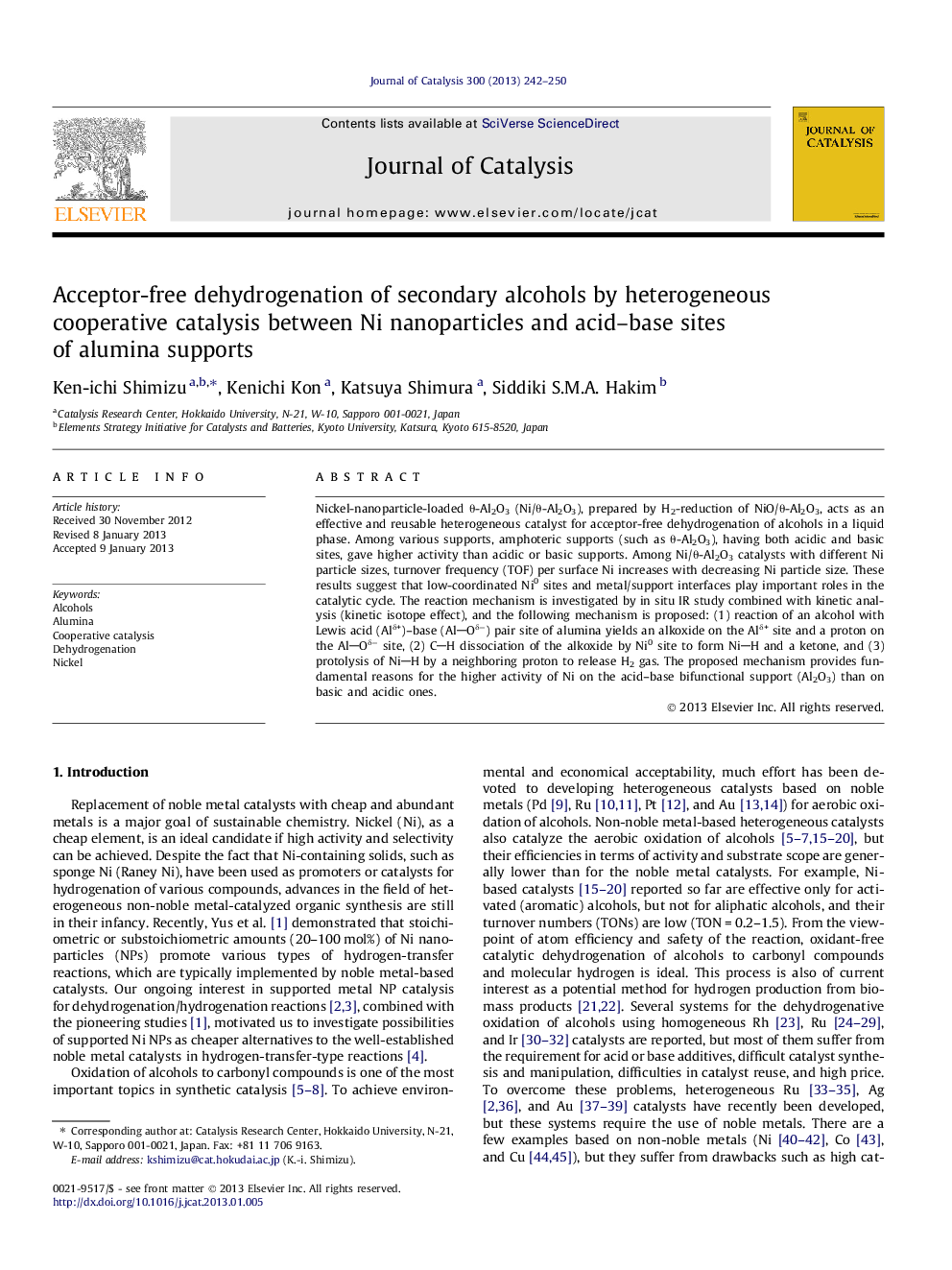| Article ID | Journal | Published Year | Pages | File Type |
|---|---|---|---|---|
| 61371 | Journal of Catalysis | 2013 | 9 Pages |
Nickel-nanoparticle-loaded θ-Al2O3 (Ni/θ-Al2O3), prepared by H2-reduction of NiO/θ-Al2O3, acts as an effective and reusable heterogeneous catalyst for acceptor-free dehydrogenation of alcohols in a liquid phase. Among various supports, amphoteric supports (such as θ-Al2O3), having both acidic and basic sites, gave higher activity than acidic or basic supports. Among Ni/θ-Al2O3 catalysts with different Ni particle sizes, turnover frequency (TOF) per surface Ni increases with decreasing Ni particle size. These results suggest that low-coordinated Ni0 sites and metal/support interfaces play important roles in the catalytic cycle. The reaction mechanism is investigated by in situ IR study combined with kinetic analysis (kinetic isotope effect), and the following mechanism is proposed: (1) reaction of an alcohol with Lewis acid (Alδ+)–base (AlOδ−) pair site of alumina yields an alkoxide on the Alδ+ site and a proton on the AlOδ− site, (2) CH dissociation of the alkoxide by Ni0 site to form NiH and a ketone, and (3) protolysis of NiH by a neighboring proton to release H2 gas. The proposed mechanism provides fundamental reasons for the higher activity of Ni on the acid–base bifunctional support (Al2O3) than on basic and acidic ones.
Graphical abstractMechanistic and structure–activity relationship studies show that oxidant-free selective oxidation of alcohols by Ni/Al2O3 proceeds by cooperation of low-coordinated Ni0 sites and acid–base sites at the metal/support interface.Figure optionsDownload full-size imageDownload high-quality image (97 K)Download as PowerPoint slideHighlights► High turnover numbers for acceptor-free dehydrogenation of secondary alcohols. ► Cooperative catalysis of Ni nanoparticle and acid-base sites of alumina. ► Ni nanoparticles with smaller size give higher activity. ► Reaction mechanism clarified by in situ infrared and kinetic studies.
